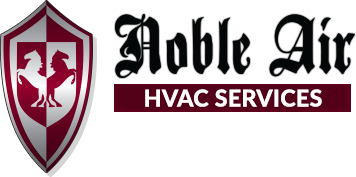Amazingly, approximately 40 percent of a commercial space’s energy use is devoted to its comfort system. That’s certainly one of the largest operating expenses, so, it’s very important that a commercial HVAC system function properly, delivering peak performance while maintaining its efficiency. Businesses rely on their HVAC system to provide an appropriate comfort level to help employees be more productive. In fact, when a workplace temperature falls to a brisk 68 degrees, employee errors increase by 44 percent and productivity falls to less than half of what it would be at 77 degrees. That drop in productivity costs employers 10 percent more for each employee, for each hour worked, according to a study conducted by Cornell University.
Common Commercial HVAC Control Issues
To avoid a cold work environment, which by the way, also has a negative impact on employees’ working relationships, companies have commercial HVAC controls installed. Psychologists have studied the effects of room temperature on behavior and mood. What these studies revealed is that when people are in a cool environment they are more likely to have feelings of isolation. Conversely, when people are in a comfortable environment, they are prone to be more social, hence more collaborative and productive.
Air conditioners employ the same operating principles and basic components as refrigerators. Refrigerators use energy (usually electricity) to transfer heat from the cool interior of the refrigerator to the relatively warm surroundings; likewise, an air conditioner uses energy to transfer heat from the interior space to the relatively warm outside environment. —Office of Energy Efficiency & Renewable Energy
This is why commercial HVAC controls are becoming so popular — they not only introduce more convenience, they also improve workplace productivity. These controls can also be part of a suite system, which also house controls for security, lighting, window treatments, and more. These controls are intended to give companies the ability to manipulate different systems at one interface. Of course, having these various systems clustered together means integrating different technologies. Such a blend should deliver more functionality and systems’ efficiency. However, no matter how complex and/or versatile commercial HVAC controls might be, there are some common issues which can cause problems in the work place:
- User errors. These control suite interfaces are designed to automate a workplace environment climate. Though these are technologically advanced systems, they are not truly automatic and need to be managed by a person. Set-points must be periodically reviewed to ensure comfort levels are appropriate.
- Programming mistakes. Commercial HVAC controls can be programmed to perform certain functions at certain times during the day or week. For instance, a control can be set to raise the temperature to 80 degrees overnight and to lower it to 77 degrees prior to the workday beginning to reduce costs. However, if there are mistakes made during programming, a system might run during the wrong time of day.
- Component malfunction or failure. Even the most advanced controls can’t determine when components malfunction or fail within the actual heating and cooling unit. Commercial HVAC units experience component wear and tear, and, eventually break down. Therefore, the controls can turn a system on, even when a vital component fails, which might cause more damage.
- Improper installation. Businesses should be careful which contractor they choose to install commercial HVAC controls because these require a specialized skill set.

